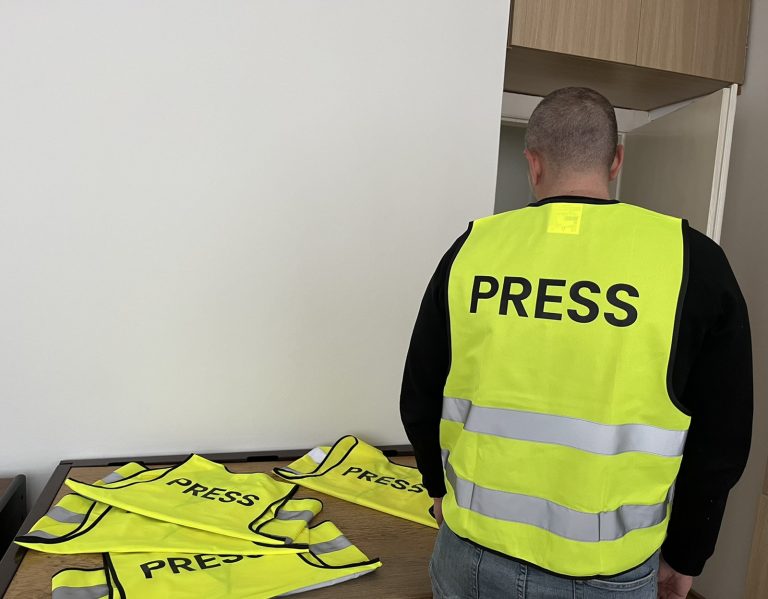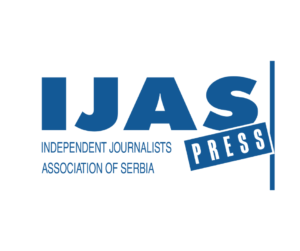Journalism watchdogs decry a record number of press freedom violations in Serbia.
In the last few decades, the former Yugoslavia registered for Westerners mostly in terms of its devastating wars. The region is today at peace, but in Serbia, a less visible war – this time between independent media and the government – is raging.
For many Serbian journalists today, the atmosphere is every bit as bad as in actual wartime.
“I say this as someone who spent her childhood and youth under the dictatorship of Slobodan Milošević,” said Jovana Gligorijević, a domestic politics journalist at the weekly news magazine Vreme, which was founded in 1990 by journalists fighting state censorship.
“Back then, we also had wars that Serbia started, but that was the only thing worse than what we are experiencing now,” Gligorijević continued. “Everything else today is worse and more dangerous than it was then.”
A sad new record
Since January, Serbian journalists pursuing a skeptical critique of the country’s government have endured a record number of violent attacks, both professionally and personally. According to Reporters Without Borders (RSF), Serbian law enforcement and political activists committed 34 assaults in less than two months this summer while journalists were covering anti-government protests.
The recent rise in violent attacks in the country correlates with increased coverage of student-led protests following the collapse of a canopy at the Novi Sad railway station on November 1, 2024, which killed 16. Journalists have covered the protests in an attempt to shine a light on the government’s negligence. But they often find themselves frozen out of accessing government records and representatives. At protests, journalists have been assaulted and caught up in arrests.
“Violence against journalists in Serbia – which Reporters Without Borders (RSF) has repeatedly warned about – has reached a sad new record,” said the watchdog organization. “This figure exceeds all annual totals of physical assaults recorded in Serbia since at least 2020.”
RSF ranks Serbia 96th out of 180 countries on its 2025 World Press Freedom Index. Other surveys have also documented nearly 100 press freedom violations against about 200 journalists in Serbia within the first six months of 2025.
Arrests, assaults and resilience
Since 2017, DW Akademie has worked with the Organization for Security and Cooperation in Europe (OSCE) in Serbia by co-organizing the Brave New Media Forum held in Belgrade. It attracts more than 300 participants from more than 20 countries and is the only annual regional media forum for the Western Balkans that focuses on themes such as freedom of the press, freedom of expression, disinformation and new media trends.
These issues have perhaps never felt more urgent as they do now.
Last month, Katerina Stevanović (pictured above wearing the gray sweatshirt) found herself in a dragnet while she was covering a protest for Vreme.
“The police forced me to lie on the ground with protesters and they planned to arrest all of us,” said the 34-year-old reporter whose professional experience includes working for the BBC Serbian Service. “Police used a lot of tear gas to disperse the demonstrators. I had my yellow press jacket, represented myself as a journalist. They checked my phone to see if I was filming and they didn’t give me a chance to report to my newsroom.”
The police eventually relented and didn’t arrest her after she insisted she was a reporter and they examined her identification.
“A treacherous dictatorship”
Milica Marković, who at 22 is just starting her journalism career, has been the target of online threats and was recently assaulted while covering a protest. The chaos and pressure of her work can leave her exhausted and fearful.
“Politics has divided the country and when you try to present both sides of an issue, the public calls you a double agent,” she said, adding, “Serbia is not a transparent dictatorship, but a very treacherous one, where the state hunts you in more subtle – but very effective – ways to silence the truth.”
She laments the lack of funds to pursue important stories, such as research she carried out on a shortage of gynecologists in the eastern regions of Serbia’s east. Local media outlets have dwindling budgets; sometimes reporters go unpaid.
“But once you start this job,” she said, “You feel the obligation to continue.”
Unsure about the long-term
Meanwhile, pro-government tabloids and a pro-government journalists association have launched smear campaigns against independent media.
“Simply put, it’s a matter of preventing them from doing their jobs professionally and effectively,” said Snezana Milošević, the Secretary General of the Association of Local and Independent Media – Local Press, which represents 53 local media outlets in Serbia.
“Online harassment on social media by bots or fake profiles – often deleted shortly after issuing threats – along with hate speech… and efforts to discredit journalists’ professional and personal integrity, all represent serious threats to the safety and well-being of local media and the journalists working within them,” she said.
A tough decision
None of this is lost on Stevanović who, while committed to her work as a journalist, wonders about how the press can continue its mission amid the daily verbal and physical attacks.
“I can see myself in this profession for a few more years,” she said, “but I’m not sure about the long-term, to be honest.”
Source: DW




